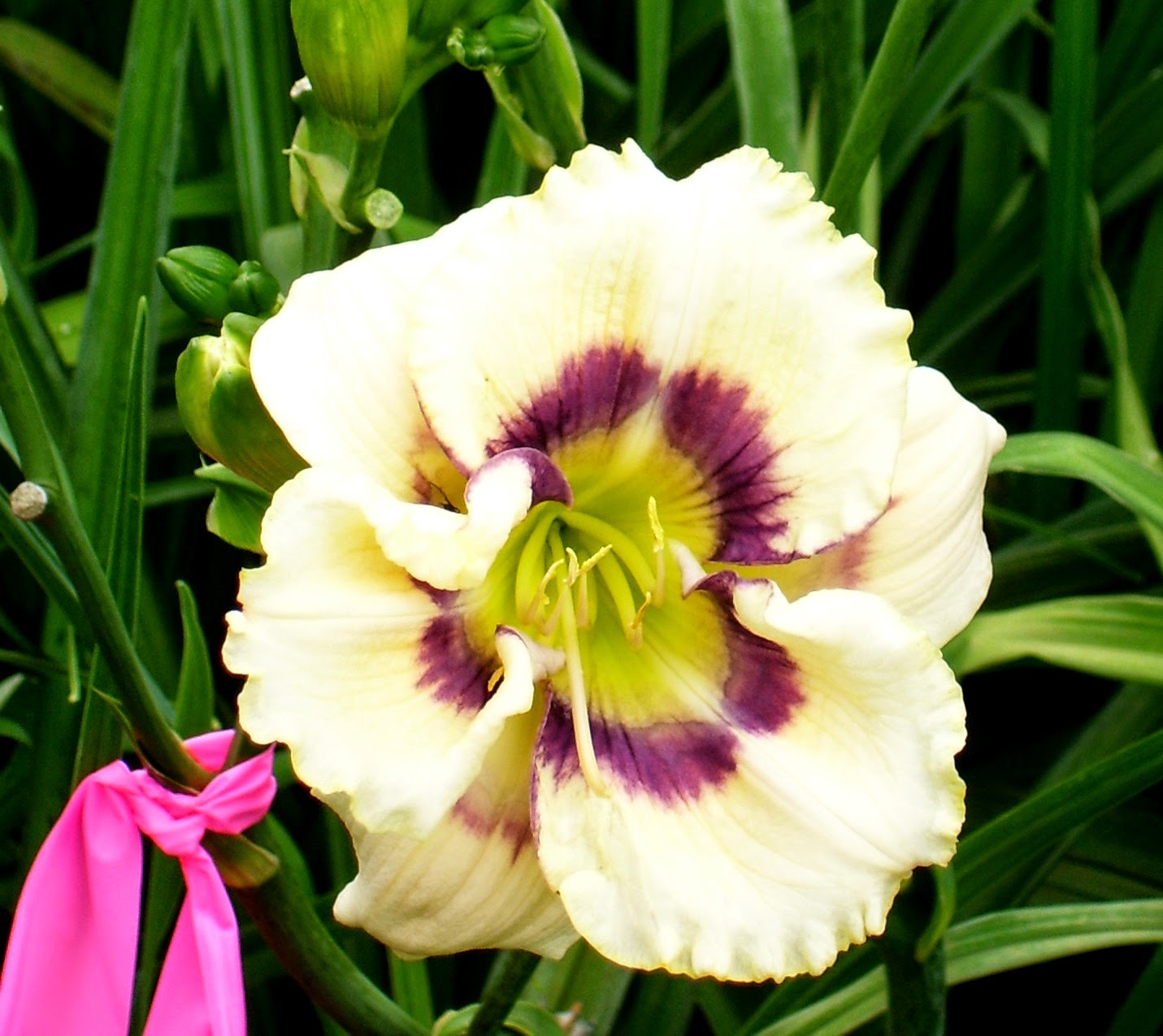High summer is here, and in Wild Rose, as strange as is may seem that the name of the village is not Daylily, that means looking at, thinking about, talking about, and evaluating daylilies. Last night, I fell asleep thinking about daylilies. I would bet that is the situation for my neighbor, Dr. Darrel Apps, too.
Dr. Apps, has retired to my village, but the use of the word "retired" is probably not correct. He has simply changed his venue. His daylily breeding program is moving along faster now than it probably ever has.
He knows what he wants in a daylily, how to get it (for the most part), and how long it might take to get there. He talks of "cleaning up a color" (He doesn't like muddy tones.), bud count, re-bloom, and since taking his breeding program into the edge of Zone 4, a lot more thought is going into the breeding of dormant types. He has specific goals for his breeding program, but he is impatient, driven.
I have been touring his selections for 3-4 years now. When I first walked the plot of his selections it was mind-numbing, overwhelming; the explosion of colors, forms, and patterns. I confess I could not take it all in at once. Asking which one I liked best, was a moot question. How could anyone possible decide? How does he decide? How could he possible be able to evaluate any of these blooms, allowing them to earn the pink ribbons that would mean he won't be composting that plant come fall?
The hardest things to keep in a breeding line, he tells me, are bud count and rebloom. He has been working on dormant daylilies in the far ranges of the color spectrum for these traits, the creamy whites and nearly blacks. There are no truly blue daylilies, either. Anything labeled such is typically a soft mauve lilac tone.
I have no names to attach to any of these photo specimens. They have numbers only; a numbering system that makes sense only to the mind of Dr. Apps. Part of it is the year he did the cross, after that I am clueless. He talks of carrying around his crosses information in notebooks in the trunk of his car before computers, fearing a fire or natural disaster. Now armed with his digital camera, he has a lot more information available, but any system tracking 2,000 to 3,000 seedlings germinated per growing season must still be mind-numbing.
Chances are, you may not know it, but if you have a daylily in your garden, it is probably one of his. Some of his patented daylilies are not in production, but others have been sold in the millions. 'Rosy Returns', 'Early Bird Cardinal', and 'Happy Returns' are some of these. Some are only in the gardens of collectors.
He shared some of his grower's stock of one of his patented plant still to be introduced, 'Arthur Kroll', with me. Likewise, his soon to be introduced, 'Happy Days Are Here Again' daylily will have a place in my garden, a potted one is sitting on my deck.
In my mind, it is forever connected to one of his first introductions, 'Happy Returns'. It is the same soft yellow as 'Happy Returns'; a soft pale yellow reblooming daylily he thought would win over designers and gardeners everywhere and replace the the brassy yellow 'Stella di Oro'. as the go-to daylily. 'Happy Returns' was one of the first rebloomers introduced after Stella.
However, 'Happy Days Are Here Again' however, is Dr. Apps' tour de force. The product of an older and and much wiser hybridizer, 'Happy Days Are Here Again' has extended bloom and a nearly perfect flower form with recurving petals on more upward facing flowers. And while the flowers are still small, the form makes them appear much larger than either Stella or 'Happy Returns'.
And, while it may seem the hydridizer Darrel Apps has been relaxing and taking it easy in his retirement, 'Happy Days Are Here Again' is merely an introduction to what I feel might be the beginning of a whole new era in how to use daylilies in our gardens and public spaces, which is only hinted at by some of the pictures I have included here.
 |
| The velvet depth of this daylily's rich coloring is simply not done justice by my picture (unnamed seed). |
 |
| Bud count, flower form, and nice foliage, there is a lot to like in this daylily (unanamed seedling) |
 |
| The green throat on this one is spectacular, (unnamed seedling). |
 |
| This one has earned a pink ribbon, and will probably be introduced. |
 |
| The delicacy of this bloom is remarkable. |
 |
| The hanging tag means he has made a cross on this flower. |
 |
| The line edging this is nearly a lime green like its throat, very special. |
 |
| An unusual spider form |
 |
| Darrel "fixing" the proportions of an annual planting in one of his planter boxes. |
 |
| Potted annuals at his home |












Those are just breathtaking daylilies. ANY of the look to be spectacular, but what do I apparently know, right? I love all of them, especially the spider form one and the one with the lime green throat. Wow. Now to muster up the strength to go visit some of mine in a while. Onward
ReplyDeleteWhat a great thing to have this guy as a neighbor. His work is inspiring. I love that sort of lilac and white spider daylily with the yellow/green throat. Terrific!
ReplyDeleteHe " baby sat' some of my starts and houseplants all winter while I was recouperating, too. He and his wife are just superbly good people.
ReplyDeleteThat is a pretty spider isn't it!